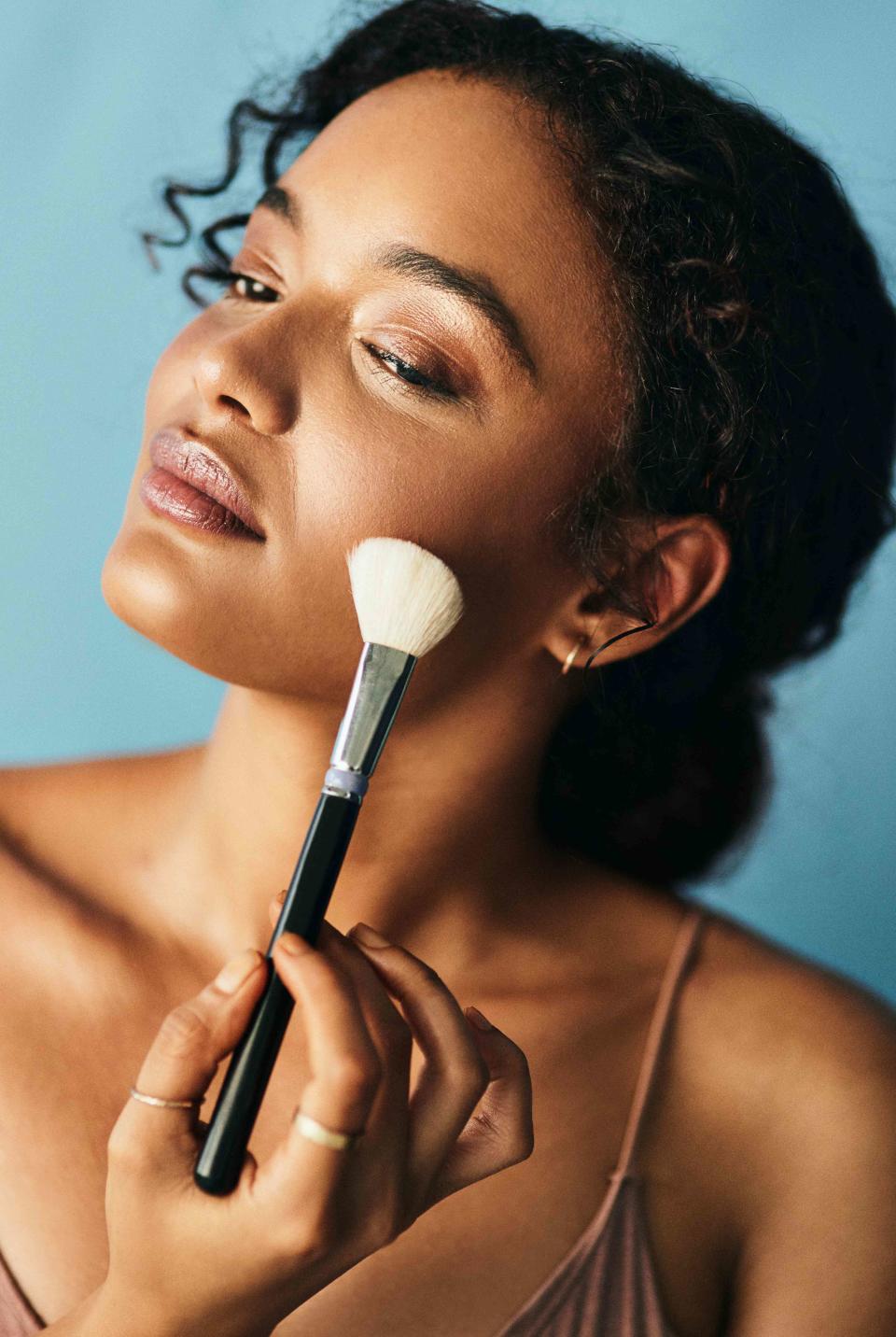What Are Makeup Primers and Why Do You Need Them?
It’s time to lock those looks into place.

Of the many beauty fears out there (e.g. a bad reaction to a chemical peel or a dye job gone terribly wrong), having your makeup run down your face sits pretty high on that list. There’s no disappointment quite like seeing your intricately drawn-on graphic liner or contoured face smudge and cake throughout the day. The easy fix to qualm this fear is a good ole makeup primer.
What is makeup primer?
According to celebrity makeup artist Neil Scibelli, a makeup primer is a base product that creates a smooth canvas on your skin and extends the wear time of makeup. “A makeup primer works as the first coat under makeup, in order to seal the pores in preventing shine and makeup from building up too much throughout the day,” Scibelli says. “[It] ideally extends the makeup used over it.”
“Primer is like your makeup’s BFF,” adds Tarte Cosmetics’ Global Makeup Artist, Lex Smith. “I apply it…to even out my skin tone, create a super smooth baby skin effect, and help makeup look better and stay put all day long. Who wouldn’t want that?”
Related:Out of 38 Face Primers Tested, These 10 Keep Makeup Intact and Flawless All Day Long
What does makeup primer do?
Primers can be used by everyone and for every skin type. Scibelli says its main purpose is to extend the wear time of makeup and can also offer skincare benefits depending on the ingredients found in the formula.
“Primers are great for all skin types, just check out the benefits that are best for your skin type,” adds Smith. “If you have oily skin like me, look for words like “mattifying.” For my dry skin girlies, choose one that’s hydrating or replenishing.”
How to apply primer on face:
Both Scibelli and Smith say that you apply primer after your moisturizer and before foundation or other complexion products that you’ll be using.
Scibelli adds that applying primer on the face is the same as applying face moisturizer, so use your fingers to put product on all over the skin. Smith agrees and adds that you’ll want to use a light layer of primer, blending it in with your fingers all over the face. She also says that primer isn’t only for foundation; she like to recommend putting primer on your eyelids to make your eye makeup more vibrant. Her last pro-tip: let primer dry for a few minutes before you apply makeup on to let it really set and be able to grip onto product.
What type of makeup primer should you use?
“Brands have continued to expand in this category with various primers that target specific skin concerns while priming the skin for makeup,” says Scibelli. “Primers can create various finishes on the skin depending on one’s interest whether it be hydrating, mattifying, luminizing, redness reducing, and so on.”
So, how to choose? You can think about it the same way you would think about your skincare: Scibelli says to find one that complements your skin type. “If your skin is oily, then you may want to skip an emollient or super-rich primer. If your skin is dry, you may find that you need a primer that has those added skincare benefits [with ingredients] in it like hyaluronic acid or other hydrating ingredients. If you’re acne-prone, you may want to look out for a primer that has salicylic acid or one that is super sheer and oil-free,” he says
He loves the Jouer's Anti-Blemish Matte Primer for blemish-prone skin because it has with salicylic acid built in for treating breakouts and minimizing the appearance of pores. (it's also silicone-free which he says helps the skin breathe) and the OG Smashbox Photo Finish Primer that he says can universally work for any skin type and all skin concerns.
You’ll also want to consider what kind of finish you’re hoping to achieve with your overall makeup look. “Primers can create various finishes on the skin depending on one’s interest,” he says. “Whether it be hydrating, mattifying, luminzing, redness reducing, and so on.” If you want to go for a more dewy look, he says you can opt for something that is oil-based. If you want something more matte, look for something that controls excess oiliness on your face.
The last thing to consider when picking a primer is how well it will work with your foundation. Smith explains that it’s important for the ingredients to complement each other so that you get the finish you want. “[For example] If you’re using a silicone-based primer, you want to use a silicone-based foundation on top. If you use a silicone-based primer with a water-based foundation, your foundation could up looking cakey,” she says. She recommends something like Tarte’s timeless primer, which she says “works like a filter for your skin” to smooth out uneven texture and blur out fine lines and the appearance of pores.
So, while adding a makeup primer is adding another step to your makeup routine, there are minimal downsides to incorporating it. Plus, the benefits of locking in your makeup and a smooth finish are just too good to pass up.
For more InStyle news, make sure to sign up for our newsletter!
Read the original article on InStyle.

